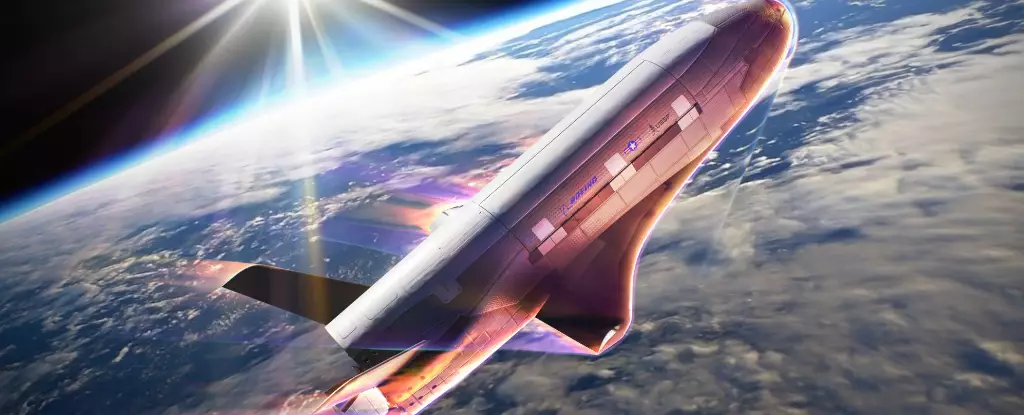Since its inaugural flight in 2011, the X-37B Orbital Test Vehicle (OTV) has sparked both intrigue and speculation among space enthusiasts and defense analysts alike. Developed by Boeing and managed by the US Space Force (USSF), this reusable, remotely piloted spacecraft is primarily intended for operations in Low-Earth Orbit (LEO), a region that extends approximately 240 to 800 kilometers (150 to 500 miles) above our planet. The OTV serves as a testbed for advanced vehicle technologies, aiming to bolster long-term objectives for human endeavors in space.
As of December 29, 2023, the OTV has embarked on its seventh mission (OTV-7). This phase is marked by rigorous experimentation, including investigations into the impact of space radiation and the development of Space Domain Awareness (SDA) technologies. This mission not only aims to provide valuable data but also marks a significant leap in understanding how reusable vehicle technologies can be further refined for future applications.
The Pioneering Aerobraking Maneuver
In a notable first, the OTV-7 mission will employ innovative maneuvers designed to alter the spacecraft’s orbital path around Earth. This approach, commonly referred to as “aerobraking,” allows the craft to skim through the upper layers of Earth’s atmosphere to decelerate and lower its orbit with minimal fuel expenditure. Such a technique has historical precedent in space exploration; it was effectively utilized by various missions to Mars, allowing spacecraft like the Mars Global Surveyor to manage their orbits deftly.
The strategic implications of employing aerobraking techniques extend beyond mere fuel efficiency. By utilizing this method, the X-37B could operate below the detection thresholds of various adversaries, enhancing its capabilities in conducting clandestine operations. As outlined by officials, leveraging previous missions’ insights bolsters the X-37B’s operational proficiency, incorporating decades of lessons learned from deep space missions.
The utilization of aerobraking resonates with the broader objectives of the Space Force, which emphasizes the importance of groundbreaking innovations. Secretary of the Air Force Frank Kendall lauded this maneuver as a significant milestone that underscores the USSF’s commitment to national security initiatives in the increasingly contested domain of space. General Chance Saltzman, Chief of Space Operations, echoed this sentiment, reinforcing the importance of agile and adaptive strategies in an area as unpredictable as outer space.
The OTV’s capability to maneuver undetected not only strengthens the United States’ strategic military advantages but also complicates adversarial tracking efforts. Former USAF Secretary Heather Wilson highlighted the unique orbital behaviors of the X-37B, capable of “egg-shaped” orbits that render prediction a challenge for potential foes. This stealth capability accentuates the necessity for adversaries to refine their tracking technologies and strategies—a situation that the USAF finds advantageous.
Despite the plethora of missions undertaken by the X-37B, much of its functionality remains shrouded in secrecy, inviting speculation from experts in the field. Astronomer Jonathan McDowell, for instance, noted that the OTV employs a secretive orbit-adjustment capability, catching trackers off-guard and forcing them to reassess their monitoring tactics continually. This unpredictability is a critical asset in the framework of national defense and deepens the mystery surrounding the X-37B’s role in modern space operations.
The experiments carried out by the X-37B during its current mission are varied and ambitious. Aside from orbital maneuvering, the vehicle will participate in experiments with NASA’s Seeds-2 initiative, assessing how space radiation affects plant seeds. Such research has implications for long-term space exploration, particularly in developing sustainable life-support systems for future crewed missions to the Moon and Mars.
As the X-37B prepares for the final phases of the OTV-7 mission, it is considered a prototype that could pave the way for future reusable space vehicles. By ejecting components of its service module, it follows guidelines established for minimizing space debris—a growing concern in modern space operations. The vehicle’s eventual deorbit and return to Earth will contribute to an understanding of reusable space platform cycles and foster advancements in sustainable practices.
The X-37B Orbital Test Vehicle encapsulates the complexities and potential of modern spaceflight. By blending innovation with military strategy, it serves as a prototype for future endeavors in an ever-more competitive cosmic landscape. As we move forward, the lessons gleaned from its missions will undoubtedly influence the design and deployment of next-generation space vehicles, with profound implications for both scientific exploration and national security.


Leave a Reply